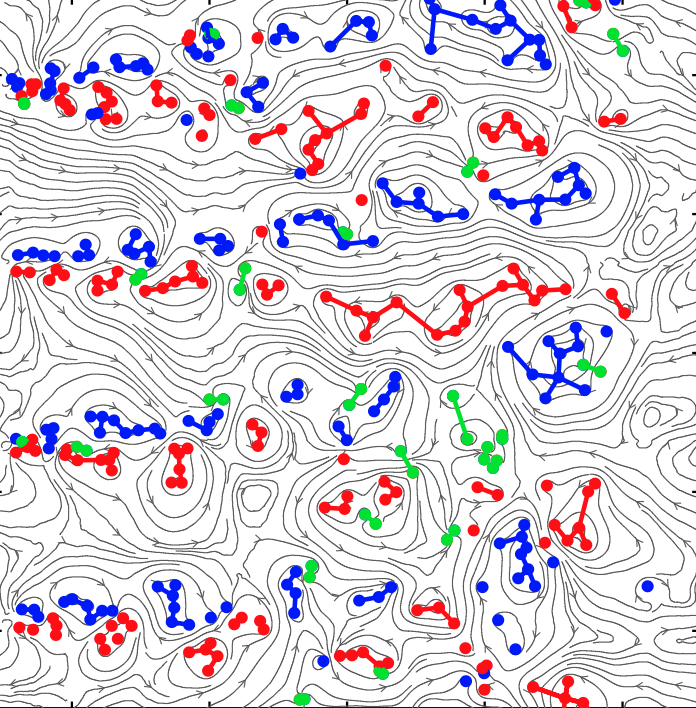Research
A full list of publications can be found here or on Google Scholar. Some of our results are outlined below.
Quantum Turbulence
We have explored a number of classical fluid turbulence phenomena in the context of planar quantum fluids. Key questions are the degree of overlap between classical and quantum fluid phenomena, whether fully developed quantum turbulence can be created and characterized in Bose-Einstein condensates, and the quantum nature of energy transport, spectral condensation, velocity correlations, and other measures of turbulent flows.

Onsager vortex clusters
In this experiment/theory collaboration, we report the first experimental observations of giant vortex cluster formation in a quantum fluid, confirming 70 year old predictions of Lars Onsager that ordered states can emerge at high energy in planar quantum turbulence. The giant vortex clusters form a quantum equivalent of large coherent structures emerging in planar turbulence, such as the famous Great Red Spot on Jupiter. Our theory of the vortex clustering transition agreed well with observations.
The experiment used state-of-the-art laser manipulation to confine an ultra-cold superfluid, and then stir it to inject giant vortex clusters without causing undue heating. Despite their high energy, the tiny quantum storms were observed to be long lived, lasting for roughly 10 seconds.
These observations overthrow conventional views of the fragility of high-energy quantum vortex structures subject to dissipation.

Inverse-Energy Cascade
The inverse energy cascade predicted by Kraichnan in 1967 in planar classical fluids was found to be supported by a damped Gross-Pitaevskii model of the ultra-cold Bose gas confined to planar fluid motion by an external potential. Large-scale quantum vortex clusters were found to develop downstream of vortex injection sites in an otherwise laminar superfluid. To verify the phenomenon we developed novel techniques of quantum vortex cluster detection, observing cluster size increasing downstream as energy accumulated at larger scales.
Reservoir theory of quantum gases
Phase-space techniques developed in quantum optics for understanding coherent light are also well suited for theoretical modeling many-body quantum systems of ultra-cold Bose atoms in the presence of a thermal reservoir. Open quantum system theory has proven a powerful approach for handling large-scale multi-mode quantum field theory of high-temperature Bose-Einstein condensates.

Spontaneous vortices in BEC: Kibble-Zurek mechanism
Vortices can form spontaneously during a quench across the Bose-Einstein condensation transition, an example of the Kibble-Zurek mechanism. Spontaneous breaking of the $U(1)$ phase into domains with scale set by the correlation length can nucleate quantum vortices between domains. Stochastic Gross-Pitaevskii simulations agreed quantitatively with experiment…